|
|
 On 22 June 1948, the British troopship ss Empire
Windrush discharged
its passengers at Tilbury Docks in Kent. Among those on board were
492 Jamaican civilians who had joined the ship at Kingston. They
were leaving behind an island devastated by a recent hurricane,
where there were few jobs and which was suffering from a long-term
agricultural depression. Their arrival marked the beginning of
a major period of black immigration to Britain, which ended in
1962 with the passing of the Commonwealth Immigrants Act. On 22 June 1948, the British troopship ss Empire
Windrush discharged
its passengers at Tilbury Docks in Kent. Among those on board were
492 Jamaican civilians who had joined the ship at Kingston. They
were leaving behind an island devastated by a recent hurricane,
where there were few jobs and which was suffering from a long-term
agricultural depression. Their arrival marked the beginning of
a major period of black immigration to Britain, which ended in
1962 with the passing of the Commonwealth Immigrants Act.
In Small Island, Hortense describes the scenes at the docks on
the arrival of the banana boat that brought her from Jamaica a
few months after the Windrush.
The only jumping and waving that was done was by the Jamaicans
arriving and leaving the ship. Women who shivered in their church
best clothes – their cotton dresses with floppy bows and
lace; their hats and white gloves looking gaudy against the grey
of the night. Men in suits and bow-ties and smart hats. They jumped
and waved. Jumped and waved at the people come to meet them. Black
men in dark, scruffy coats with hand-knitted scarves. Hunched over
in the cold. Squinting and straining to see a bag or hair or shoes
or a voice or a face they knew. Who looked feared – their
eyes opening a little too wide – as they perused the luggage
that had been brought across the ocean and now had to be carried
through the streets of London.
There was a long tradition of Caribbean people migrating in search
of work, either to different parts of the West Indies or to the
USA. The 1948 Nationality Act, which gave all members of the Commonwealth
the right of British citizenship, made the prospect of travelling
further afield to the Mother Country more attractive. At the time,
Conservative MP David Maxwell Fyfe was quoted as saying:
We are proud that we impose no colour-bar restrictions… We
must maintain our great metropolitan traditions of hospitality
to everyone from every part of the empire.
America continued to be the preferred migrant destination, however,
until the implementation of the McCarren-Walter Act in 1952. This
restricted entry to the USA and led to an increase in immigration
to Britain. Before the 1952 Act, immigration to Britain from the
Caribbean was measured annually in the high hundreds. By 1953 it
had reached 2,200, jumping to 10,000 the following year and reaching
27,550 in 1955. Anticipating that the British government would
soon bring in their own entry restrictions, there was a rush to
come to Britain from the Caribbean in 1961 when the annual immigration
figure rose to its peak of 66,300.
In response to official concerns about how the growing numbers
of immigrants were settling into British society, the British Caribbean
Welfare Service was established in 1956 to help new arrivals. It
consulted with the various Caribbean authorities to assess the
immigrants’ likely needs and provided welfare officers ‘on
the ground’. Two years later the body was renamed with the
long-winded title The Migrant Services Division of the Commission
in the United Kingdom for the West Indies, British Guiana and British
Honduras.
Enoch Powell, the Conservative MP, had been among those politicians
who had encouraged Caribbean people to come to Britain in the immediate
post-war period to combat labour shortages in essential services.
In 1968, twenty years after the arrival of the Windrush, he made
his infamous ‘Rivers of Blood’ speech in which he anticipated
that there would be widespread violence if non-white immigration
continued. Throughout the late 1950s, opportunist politicians had
been stoking up resentment on the part of some of the resident
population who felt they were losing out to the newcomers. Although
those coming to Britain from the Caribbean were by no means the
only immigrants at that time, they stood out as easy targets because
of the colour of their skin. In August 1958 Nottingham saw two
weeks of civil unrest sparked by the immigration issue. This was
followed by a week of mob violence on the streets of Notting Hill
aimed at Caribbean people.
Rightwing nationalists not only found a willing audience among
the street-fighting Teddy Boys and skinheads of the 1950s and 1960s.
They also had the sympathies of some of the major unions, feeding
on anxiety about job losses and wage cuts. Many people from the
Caribbean, like Small Island’s
Gilbert, found work with the General Post Office, but there were
few opportunities for career progression for black employees while
the unions’ branch
officials remained advocates of the policies of Sir Oswald Mosley
and later of Enoch Powell. Even when the unions were supportive
of black workers they sometimes struggled to convince their white
members that hiring black people would not lead to employment problems.
In Bristol in the early 1960s, for example, although the Transport
and General Workers’ Union backed moves to employ black crews
on the buses they faced opposition from white employees of the
Bristol Omnibus Company. This dispute led to a bus boycott with
local people refusing to use the service until the colour bar was
lifted. The boycott proved successful and the first black and Asian
drivers and conductors were appointed in Bristol in 1963 (see the
BBC
Legacies website for further details).
The anti-discrimination legislation of the 1960s and 1970s, while
not ending racist attitudes, did help to break down some of the
barriers to employment, housing, education, justice, welfare and
other areas of public life that had previously existed for black
people. The Caribbean immigrants, now settled to varying degrees
as British residents, were also establishing their own businesses
and community groups as well as entering local and national politics
where they could challenge instances of discrimination.
You can find out more about The Windrush Generation
and Settling In by downloading the relevant sections of the readers’ guide
from the Downloads page, and following the Read
More links
on this page.
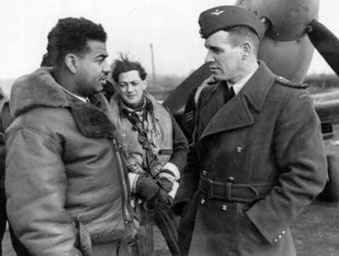
The War Years. Read more...
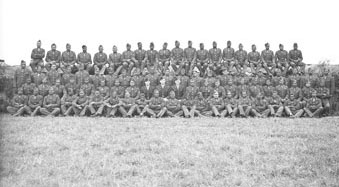
Black GIs in Britain. Read
more...
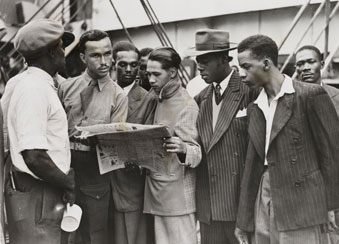
Empire Windrush. Read
more...
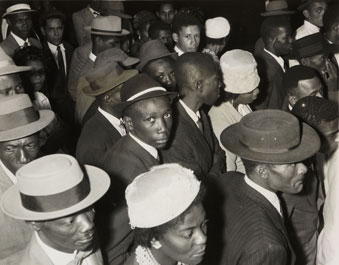
Arrival. Read
more...
|
|

Children. Read
more...
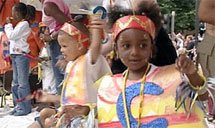
Black British. Read
more...
|
|